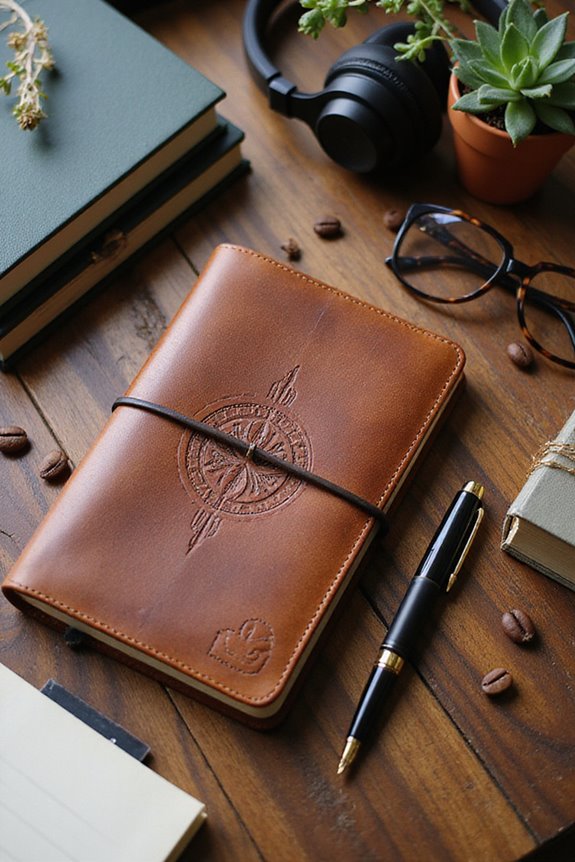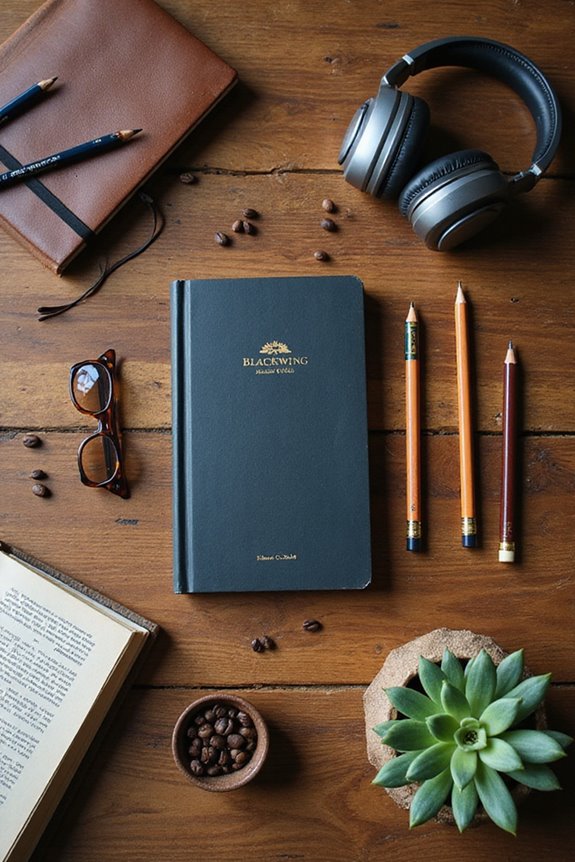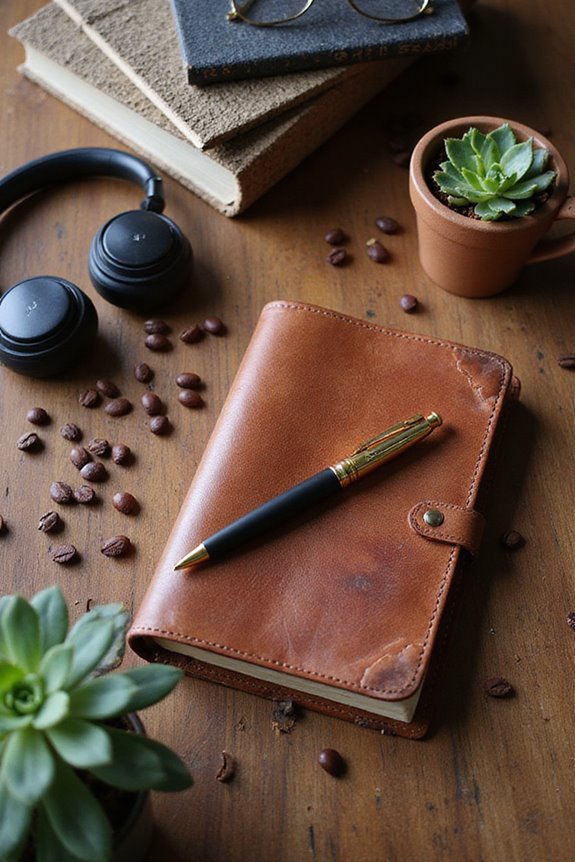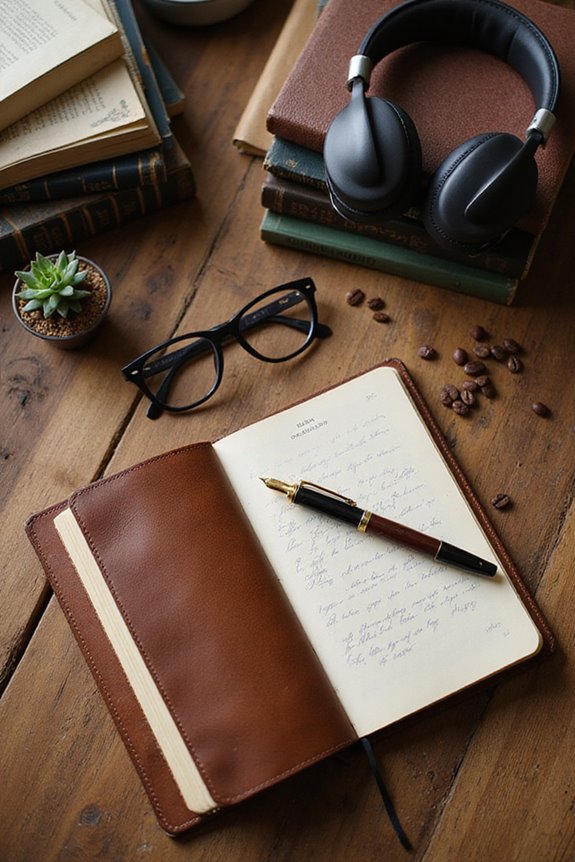When it comes to how many notebooks we should keep as writers, it really depends on our personal style and needs. We might want to have a few dedicated ones for different purposes, like a bullet journal for planning and a sketchbook for ideas. Keeping them organized can spark creativity and help us track our growth. Experiment with what feels right for you, and you might discover the perfect balance that enhances our writing journey. Want to explore more notebook strategies?
Key Takeaways
- The ideal number of notebooks varies by personal preference and writing style, enabling tailored organization for each writer’s needs.
- Dedicate separate notebooks for distinct projects or subjects to enhance organization and streamline creativity.
- Consider a single notebook divided into sections for those who manage fewer projects, balancing simplicity and functionality.
- Regularly assess your writing routine to determine how many notebooks support your creative process without causing overwhelm.
- Experiment with different formats and quantities to find a system that fosters productivity and inspires creativity.
The Essential Notebook for Every Writer
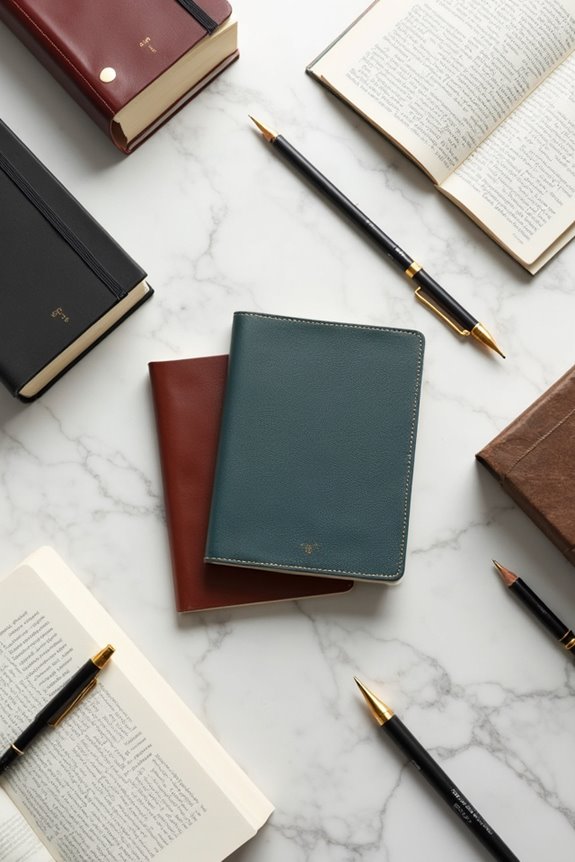
When it comes to writing, having the right tools can make all the difference, and notebooks are at the top of that list. The essential notebook for every writer really depends on our needs. If we’re chasing inspiration sources, a classic bound journal, like a Moleskine, can deliver notebook aesthetics that spark creativity. For those of us who love organization, a bullet journal with numbered pages and a table of contents helps keep thoughts in check. If we’re left-handed, don’t shy away from specialized left-handed notebooks to ease writing. We might even consider open-flat designs for that comfortable, stress-free writing experience. Furthermore, prompts in writing journals can foster creativity and provide a structured outlet for our thoughts. The right notebook, whether durable leather or whimsical in design, can genuinely elevate our writing journey!
The Benefits of Multiple Notebooks
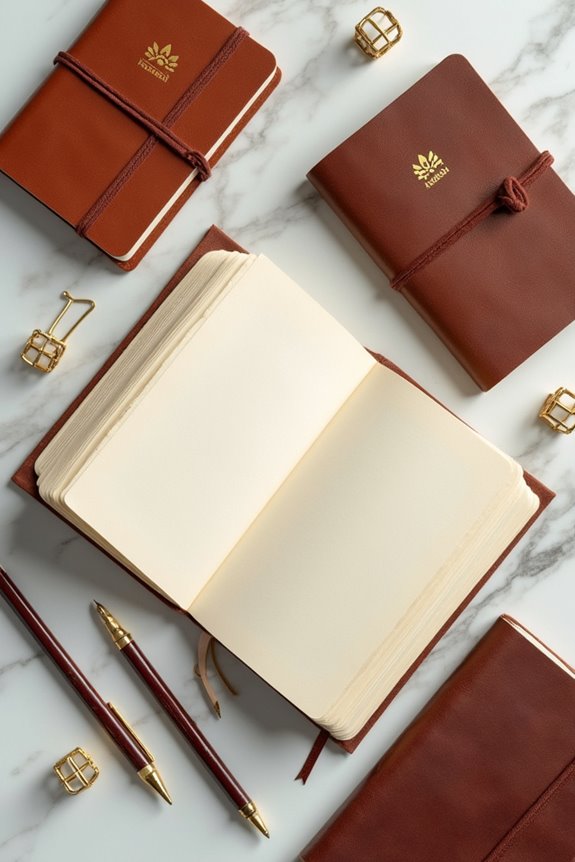
Notebooks can work wonders not just as individual tools, but when we use multiple ones, the benefits expand considerably. With several notebooks, we enable creative exploration and organization of ideas in ways that a single notebook simply can’t manage. Each notebook can serve a specific purpose, like one for jotting down fleeting thoughts and another for more structured drafts. This division helps us track our personal growth, enhance our storytelling, and minimize the chaos often associated with our writing. Plus, flipping between notebooks can reignite our creativity, like a revitalizing change of scenery. Additionally, utilizing durable covers can ensure that your notebooks withstand the test of time, allowing for a more reliable writing experience. So, let’s embrace the chaos of multiple notebooks; they may just be the keys to revealing our best stories!
Functional Uses of Different Notebooks
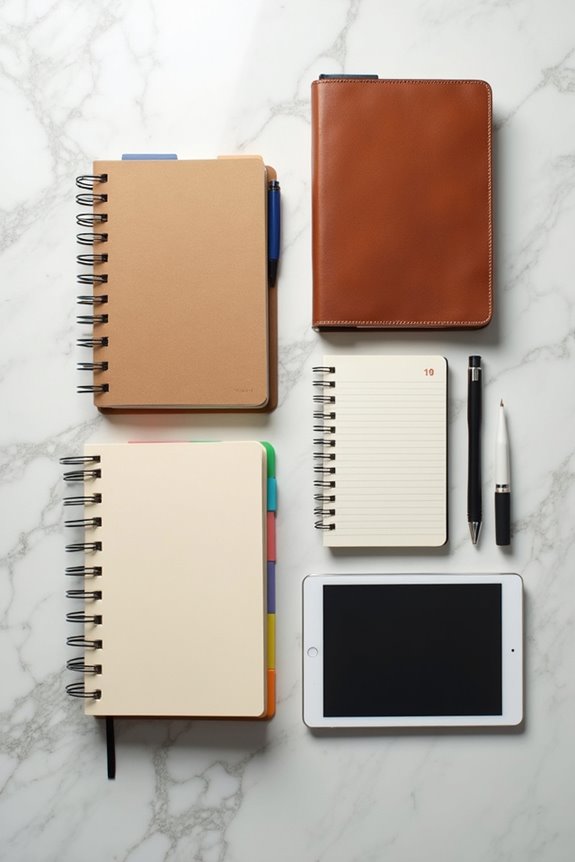
While it might seem like writing can happen in just about any notebook, let’s explore how each type serves a unique purpose. Spiral notebooks are perfect for everyday writing on the go, thanks to their portability and flexible use. Laboratory notebooks help us keep precise records in structured layouts, essential for scientific tasks. Bullet journals provide a creative organization tool with customizable layouts, where we can design our own planners and trackers. Pocket notebooks are great for spontaneous note-taking, capturing ideas whenever inspiration strikes. Finally, composition notebooks, with their simple design, are ideal for academic use. By understanding these notebook types, we can maximize our writing productivity and creativity in a way that best suits our needs. Additionally, considering the importance of structured lessons can significantly enhance the effectiveness of the writing process.
Recommended Features for the Ideal Writing Notebook
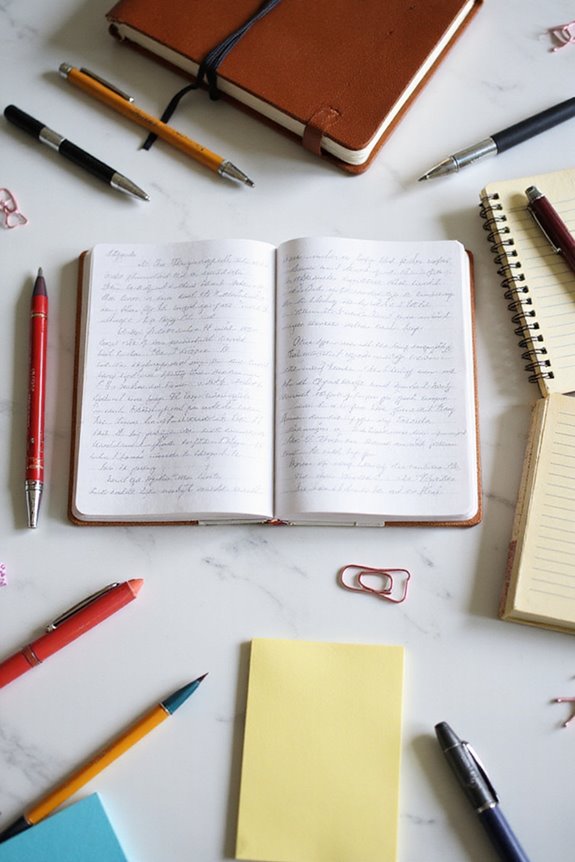
Finding the right notebook is like choosing the perfect writing partner; it should complement our style and support our creativity. When looking for the ideal writing notebook, we should prioritize paper quality—high-quality, smooth paper prevents ink bleeding, ensuring that our thoughts flow freely. Consider binding methods too; options like spiral binding help the notebook lay flat, making it easier to write on both sides. Additionally, using acid-free paper can preserve our work over time, keeping those brilliant ideas fresh. Don’t forget about size! A5 notebooks hit the sweet spot between portability and ample writing space. Furthermore, it’s essential to understand the ruling style that best suits our writing preferences, as different styles can greatly enhance our note-taking experience. Let’s keep these features in mind, and we’ll be well on our way to selecting the perfect notebook for our writing adventures!
Notebook Formats: Choosing the Right Type
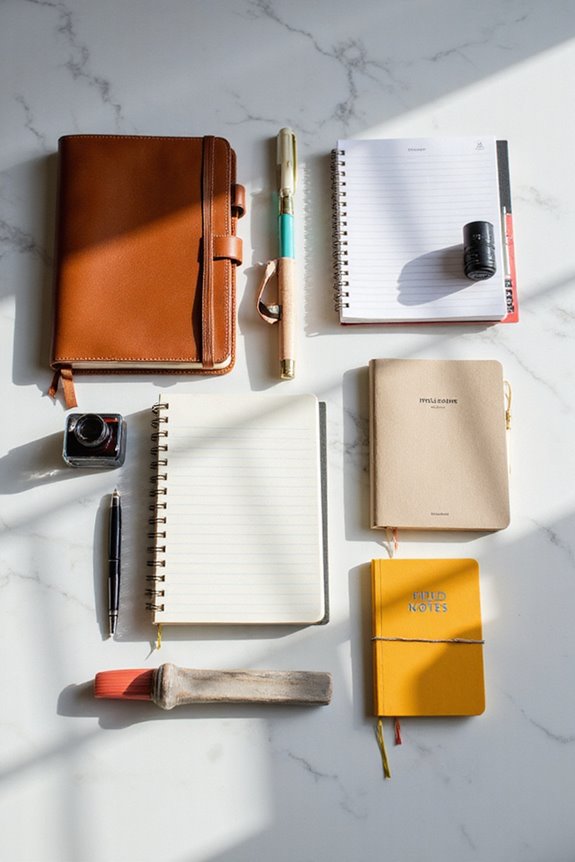
When we talk about choosing the right type of notebook, it’s easy to feel overwhelmed by the options. There are various notebook types to evaluate, and our writing preferences play a big role in the decision. For heavier notes, a bound notebook with different page layouts might suit us best, while a composition notebook provides a more economical option for school tasks. If portability matters, we could opt for small-format A6 notebooks for quick ideas. Larger sizes like B5 offer ample space for journaling or planning. And remember, the quality of paper impacts our experience—thicker paper reduces ink bleed. Ultimately, we should choose a notebook that aligns with how we write and where we write. Additionally, considering paper quality ensures a smoother writing experience and can significantly enhance our overall journaling satisfaction.
Portability and Its Importance for Writers
Choosing the right notebook is only part of the equation; portability plays a huge role in how effectively we can harness our creativity. When it comes to portable writing, the smaller, the better. Lightweight notebooks easily fit in our pockets or bags, making spontaneous creativity accessible wherever we go. Imagine our commute turns into a brainstorming session, jotting down ideas without needing batteries or a power outlet. Plus, the unplugged nature of writing by hand keeps distractions at bay, ensuring our focus stays sharp. Consider spiral-bound options for easier handling. Just remember, while smaller notebooks may limit our writing space, they greatly boost our chances of capturing those fleeting thoughts. The choice between ruled vs. unruled options can also impact how we organize our ideas on-the-go. So, let’s embrace portability and make the most of our creative moments!
Psychological and Creative Advantages of Notebooks
Notebooks aren’t just blank pages waiting for our thoughts; they’re powerful tools for psychological and creative growth. When we jot down our feelings or ideas, we can achieve mental clarity, helping us manage stress and anxiety more effectively. This simple act can boost our mood and even increase our self-awareness, revealing what we truly value.
On the creative side, notebooks act as a treasure chest for inspiration, housing everything from random doodles to fully fleshed-out stories. By organizing our thoughts, we can enhance our creative flow, making it easier to develop characters or plotlines. So, let’s embrace our notebooks—they’re not just for notes, but an essential part of our journey as writers!
Practical Guidelines for Managing Notebooks
Managing a collection of notebooks can feel like a juggling act, especially as our writing projects expand and evolve. To simplify notebook organization, we can dedicate separate notebooks for distinct projects. This keeps our notes tidy and easily retrievable. Using note taking strategies like color coding or clear headings helps us find information quickly.
We might also consider a single notebook divided into sections if we’re working on fewer projects. Regularly reviewing our notebooks—weekly or monthly—lets us clarify and migrate important notes, keeping our thoughts fresh. And don’t forget to combine our physical notebooks with digital tools for backups. This balance keeps our ideas flowing smoothly while reducing clutter. Let’s embrace these practical guidelines together for a more organized writing journey!
Finding Your Personal Notebook Balance
Finding that sweet spot for how many notebooks we should have can feel a bit like searching for the perfect pizza topping—everyone has their own preference! To find our personal balance, we first need to evaluate our notebook styles and how they fit our creative organization. Are we more into project categorization or content consolidation? Identifying our writing routines helps, too. For instance, if we love journaling, we might need a dedicated notebook for daily entries. On the other hand, if we prefer sketching out ideas quickly, a simpler notebook might suffice. Experiment with different note-taking strategies until you find what feels right. Remember, it’s all about what fosters our artistic expression without overwhelming us!
Frequently Asked Questions
Can I Use Digital Notebooks Instead of Physical Ones?
We can definitely use digital notebooks instead of physical ones. Notebook apps offer convenience, easy organization, and portability. However, we should also consider the tactile experience and focus challenges that come with digital vs. physical note-taking.
How Do I Label My Notebooks Effectively?
Labeling our notebooks effectively is like organizing a library; it requires thoughtful labeling strategies. We can use distinct themes and color codes, ensuring clarity and easy access to our creativity, notes, and ideas when needed.
What Should I Do With Completed Notebooks?
When we finish our notebooks, let’s consider notebook recycling and repurposing completed projects. We can extract valuable insights, digitize important pages, and decide which notebooks to keep or let go, maintaining an organized system.
Can I Mix Personal and Professional Writing in One Notebook?
As we plunge into the pages of our mixed notebook, personal reflections and creative prompts intertwine like threads in fabric. Yet, clarity can fade; perhaps separating them can shield our creativity while boosting focus and flow.
Is There a Recommended Frequency for Notebook Organization?
We recommend setting a regular notebook maintenance frequency, perhaps weekly or monthly. Using effective organization techniques like color-coding and sectioning can keep our ideas clear and accessible, enhancing our overall writing experience.

